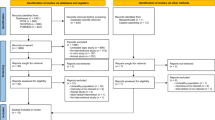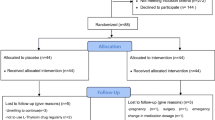Abstract
In this study, we investigated the effects of selenium (Se) on the properties of erythrocytes and atherogenic index in the presence and absence of high cholesterol diet (HCD). The effect of selected two different doses (1 μg and 50 μg Se/kg/body weight) on HCD-induced oxidative stress was investigated. The hemolysis of the erythrocytes of the HCD rats as well as by high levels of selenium or their combination was markedly increased. Likewise, atherogenic index and plasma glutathione peroxidase (GPx) activity were significantly increased in the same groups of rats compared to control ones. In contrast, paraoxonase activity, glutathione levels and protein thiol levels, catalase, GPx, and superoxide dismutase activities were significantly decreased in rats that received the HCD, high selenium dose, or their combination. Malondialdehyde and protein carbonyl levels in the plasma and red blood cells were significantly increased by HCD and high selenium dose administration. Co-administration of selenium at low dose with or without an HCD restored all of the investigated parameters to near-normal values. The results of this study suggest that excess selenium administration with HCD worsens the atherogenic index and enhances formation of oxidized red blood cells. At dosage levels in the nutritional range such as 1 μg Se/kg body weight, selenium ameliorates the atherogenic index and preserves the antioxidant capacity of the erythrocytes.



Similar content being viewed by others
References
Papp LV, Lu J, Holmgren A, Khanna KK (2007) From selenium to selenoproteins: synthesis, identity, and their role in human health. Antioxid Redox Signal 9:775–806
Li WH, Hsu FL, Liu JT, Liao VH (2011) The ameliorative and toxic effects of selenite on Caenorhabditis elegans. Food Chem Toxicol 49(4):812–909
Atencio L, Moreno I, Jos A, Prieto AI, Moyano R, Blanco A, Camean AM (2009) Effects of dietary selenium on the oxidative stress and pathological changes in tilapia (Oreochromis niloticus) exposed to a microcystin-producing cyanobacterial water bloom. Toxicon 53:269–282
Kurtsikidze I (2006) Effect of treatment with selenium electrophoresis on biochemical indices in patients suffering from ischaemic cardiac disease with a stable stenocardia of tension. Georgian Med News 47–51
Gad MA, Abd El-Twab SM (2009) Selenium toxicosis assessment (in vivo and in vitro) and the protective role of vitamin B12 in male quail (Coturnix coturnix). Environ Toxicol Pharmacol 27(1):7–16
Spallholz JE, Palace VP, Reid TW (2004) Methioninase and selenomethionine but not Se-methylselenocysteine generates methylselenol and superoxide in an in vitro chemiluminescent assay: implications for the nutritional carcinostatic activity of selenoamino acids. Biochem Pharmacol 67:547–554
Cimen MYB (2008) Free radical metabolism in human erythrocytes. Clin Chim Acta 390:1–11
Palchaudhuri S, Raymond A, Carlson EA, Li Y, Zelikoff JT (2001) Cytotoxic and cytoprotective effects of selenium of bluegill sunfish (Lepomis macrochirus) phagocytic cells in vitro. Bull Environ Contam Toxicol 67:672–679
Kumar SA, Sudhahar V, Varalakshmi P (2006) Oxidative renal injury and lipoprotein oxidation in hypercholesterolemic atherogenesis: role of eicosapentaenoate-lipoate (EPA-LA) derivative. Prostaglandins Leukot Essent Fatty Acids 75:25–31
Martinez M, Vaya A, Marti R, Gil L, Lluch I, Carmena R, Aznar J (1996) Erythrocyte membrane cholesterol/ phospholipid changes and hemorheological modifications in familial hypercholesterolemia treated with lovastatin. Thromb Res 83:375–388
Mason RP, Walter MF, Jacob RF (2004) Effects of HMG-CoA reductase inhibitors on endothelial function: role of microdomains and oxidative stress. Circulation 1; 109(21 Suppl 1): 1134–1141
Madamanchi NR, Vendrov A, Runge MS (2005) Oxidative stress and vascular disease. Arterioscler Thromb Vasc Biol 25(1):29–38
Minetti M, Agati L, Malorni W (2007) The microenvironment can shift erythrocytes from a friendly to a harmful behavior: pathogenetic implications for vascular diseases. Cardiovasc Res 75(1):21–28
Beltowski J, Jamroz-Wiśniewska A, Borkowska E, Wójcicka G (2005) Differential effect of antioxidant treatment on plasma and tissue paraoxonase activity in hyperleptinemic rats. Pharmacol Res 51(6):523–532
Nguyen SD, Kim JR, Ree KM, Sok JT, Sok DE (2004) Copper ions and hypochlorite are mainly responsible for oxidative inactivation of paraoxon-hydrolyzing activity in human high density lipoprotein. Toxicol Lett 147:201–208
Deepa PR, Varalakshmi P (2006) Favorable modulation of the inflammatory changes in hypercholesterolemic atherogenesis by low-molecular-weight heparin derivative. Int J Cardiol 106:338–347
Sreekala S, Indira M (2009) Impact of co administration of selenium and quinolinic acid in the rat's brain. Brain Res 1281:101–107
Folch J, Lee M, Sloane Stanley GH (1957) A simple method for the isolation and purification or total lipids from animal tissues. J Biol Chem 226:497–509
Koster JF, Biemond P, Swaak AJ (1986) Intracellular and extracellular sulphydryl levels in rheumatoid arthritis. Ann Rheum Dis 45:44–46
Hissin PJ, Hilf R (1976) A fluorometric method for determination of oxidized and reduced glutathione in tissues. Anal Biochem 74:214–226
Ohkawa H, Ohishi N, Yagi K (1979) Assay for lipid peroxides in animal tissues by thiobarbituric acid reaction. Anal Biochem 95:351–358
Levine L, Williams J, Stadtman R, Shacter E (1994) Carbonyl assay for determination of oxidatively modified proteins. Methods Enzymol 233:346–357
Lowry OH, Rosebrough NJ, Farr AL, Randall RJ (1951) Protein measurement with the folin phenol reagent. J Biol Chem 193(1):265–275
Ayub A, Mackness MI, Arrol S, Mackness B, Patel J, Durrington PN (1999) Serum paraoxonase after myocardial infarction. Arterioscler Thromb Vasc Biol 19(2):330–335
Rotruck JT, Pope AL, Ganther HE, Swanson AB, Hafeman D, Hoekstra WG (1973) Selenium: biochemical role as a component of glutathione peroxidase. Science 179:588–590
Pinto RE, Bartley W (1969) The effect of age and sex on glutathione reductase and glutathione peroxidase activities on aerobic glutathione oxidation in rat liver homogenate. Biochem J 112:109–115
Habig WH, Pabst MJ, Jakoby WB (1974) Glutathione-S-transferases. The first enzymatic step in mercapturic acid formation. J Biol Chem 49:130–139
Marklund S, Marklund G (1974) Involvement of the superoxide anion radical in the autoxidation of pyrogallol and a convenient assay for superoxide dismutase. Eur J Biochem 47:469–474
Aebi H (1984) Catalase in vitro. In: Packer L (ed) Methods in enzymology, vol 105. Academic, Orlando, pp p121–126
Kraus A, Roth HP, Kirchgessner M (1997) Supplementation with vitamin C, vitamin E or beta-carotene influences osmotic fragility and oxidative damage of erythrocytes of zinc-deficient rats. J Nutr 127(7):1290–1296
Schiar VP, Dos Santos DB, Paixão MW, Nogueira CW, Rocha JB, Zeni G (2009) Human erythrocyte hemolysis induced by selenium and tellurium compounds increased by GSH or glucose: a possible involvement of reactive oxygen species. Chem Biol Interact 177(1):28–33
Burk RF, Norsworthy BK, Hill KE, Motley AK, Byrne DW (2006) Effects of chemical form of selenium on plasma biomarkers in a high-dose human supplementation trial. Cancer Biomarkers Prev 15:804–810
Hoffman DJ, Sanderson CJ, LeCaptain LJ, Cromartie E, Pendleton GS (1992) Interactive effects of selenium, methionine and dietary protein on survival, growth and physiology in mallard ducklings. Arch Environ Contam Toxicol 23:163–169
Stranges S, Navas-Acien A, Rayman MP, Guallar E (2010) Selenium status and cardio-metabolic health: state of the evidence. Nutr Metab Cardiovasc Dis 20(10):754–760
Mueller AS, Klomann SD, Wolf NM, Schneider S, Schmidt R, Spielmann J, Stangl G, Eder K, Pallauf J (2008) Redox regulation of protein tyrosine phosphatase 1B by manipulation of dietary selenium affects the triglyceride concentration in rat liver. J Nutr 138:2328–2336
Rayman MP, Stranges S, Griffin BA, Pastor-Barriuso R, Guallar E (2011) Effect of supplementation with high-selenium yeast on plasma lipids: a randomized trial. Ann Intern Med 154(10):656–665
Harisa G (2011) L-Arginine ameliorates arylesterase/ paraoxonase activity of paraoxonase-1 in hypercholesterolemic rats. Asian J Biochem 6(3):263–272
Augusti PR, Quatrin A, Somacal S, Conterato GM, Sobieski R, Ruviaro AR, Maurer LH, Duarte MM, Roehrs M, Emanuelli T (2012) Astaxanthin prevents changes in the activities of thioredoxin reductase and paraoxonase in hypercholesterolemic rabbits. J Clin Biochem Nutr 51(1):42–49
Gençer N, Arslan O (2009) Purification human PON1Q192 and PON1R192 isoenzymes by hydrophobic interaction chromatography and investigation of the inhibition by metals. J Chromatogr B Analyt Technol Biomed Life Sci 877:134–140
Shetty JK, Prakash M, Tripathy S, Verma M, Shashidhar NK, Sureshbabu P (2007) Serum paraoxonase activity and protein thiols in chronic renal failure patients. Asian J Biochem 2(4):274–278
Ayotte P, Carrier A, Ouellet N, Boiteau V, Abdous B, Sidi EA, Château-Degat ML, Dewailly É (2011) Relation between methylmercury exposure and plasma paraoxonase activity in Inuit adults from Nunavik. Environ Health Perspect 119(8):1077–1083
Costa LG, Vitalone A, Cole TB, Furlong CE (2005) Modulation of paraoxonase (PON1) activity. Biochem Pharmacol 69:541–550
Halver JE, Felton SM, Zbanyszek R (2004) Carcass selenium loss as an indicator of stress in barrage transported Chinook salmon (Oncorhynchus tshawytscha). Aquac Res 35:1099–1103
Dahingra S, Singh U, Bansal MP (2003) Protective role of selenium status on T3/T4 kinetics in rats under hyperlipidemia. Indian J Biochem Biophys 40:260–264
Stephensen CB, Marquis GS, Douglas SD, Kruzich LA, Wilson CM (2007) Glutathione, glutathione peroxidase, and selenium status in HIV-positive and HIV-negative adolescents and young adults. Am J Clin Nutr 85(1):173–181
Zhang J, Wang H, Yan X, Zhang L (2005) Comparison of short-term toxicity between nano-selenium and selenite in mice. Life Sci 76(10):1099–10109
Soudani N, Ben Amara I, Troudi A, Hakim A, Bouaziz H, AyadiMakni F, Zeghal KM, Zeghal N (2011) Oxidative damage induced by chromium (VI) in rat erythrocytes: protective effect of selenium. J Physiol Biochem 67(4):577–588
Nagy L, Nagata M, Szabo S (2007) Protein and non-protein sulfhydryls and disulfides in gastric mucosa and liver after gastrotoxic chemicals and sucralfate: possible new targets of pharmacologic agents. World J Gastroenterol 13(14):2053–2060
Ozdemirler G, Kucuk S, Orhan Y, Aykac-Toker G, Uysal M (2001) Lipid and protein oxidation in erythrocyte membranes of hypercholesterolemic subjects. Clin Biochem 34:335–339
Balogh K, Weber M, Erdelyi M, Mezes M (2004) Effect of excess selenium supplementation on the glutathione redox system in broiler chicken. Acta Vet Hung 52(4):403–411
Aydin S, Uzun H, Sozer V, Altug T (2009) Effects of atorvastatin therapy on protein oxidation and oxidative DNA damage in hypercholesterolemic rabbits. Pharmacol Res 59(4):242–247
Amici A, Levine RL, Tsai L, Stadtman ER (1989) Conversion of amino acid residues in proteins and amino acid homopolymers to carbonyl derivatives by metal-catalyzed oxidation reactions. J Biol Chem 264:3341–3346
Sefi M, Ben Amara I, Troudi A, Soudani N, Hakim A, Zeghal KM, Boudawara T, Zeghal N (2012) Effect of selenium on methimazole-induced liver damage and oxidative stress in adult rats and their offspring. Toxicol Ind Health. 2012 Oct 9 [Epub ahead of print].
Trevisan R, Mello DF, Fisher AS, Schuwerack PM, Dafre AL, Moody AJ (2011) Selenium in water enhances antioxidant defenses and protects against copper-induced DNA damage in the blue mussel Mytilus edulis. Aquat Toxicol 101(1):64–71
Folmer V, Farina M, Maciel EN, Nogueira CW, Zeni G, Emanuelli T, Rocha JBT (2004) Methyl phenyl selenide causes heme biosynthesis impairment and its toxicity is not modified by dimethyl sulphoxide in vivo. Drug Chem Toxicol 27(4):331–340
Facorro G, Aguirre F, Florentin L, Diaz M, De Paoli T, Ihlo JE, Hager AA, SanchezAvalos JC, Farach HA, Poole CP (1997) Oxidative stress and membrane fluidity in erythrocytes from patients with hemolytic uremic syndrome. Acta Physiol Pharmacol Ther Latinoam 47(3):137–146
Hoffman DJ (2002) Role of selenium toxicity and oxidative stress in aquatic birds. Aquat Toxicol 57(1):11–17
Hoffman DJ, Heinz GH, LeCaptain LJ, Bunck CM, Green DE (1991) Subchronic hepatotoxicity of selenomethionine in mallard ducks. J Toxicol Environ Health 32:449–455
Brandão R, Lara FS, Pagliosa LB, Soares FA, Rocha JB, Nogueira CW, Farina M (2005) Hemolytic effects of sodium selenite and mercuric chloride in human blood. Drug Chem Toxicol 28(4):397–407
Krukoski DW, Comar SR, Claro LM, Leonart MS, Nascimento AJ (2009) Effect of vitamin C, deferoxamine, quercetin and rutin against tert-butyl hydroperoxides oxidative damage in human erythrocytes. Hematol 14:168–172
Acknowledgment
The authors extend their appreciation to the Deanship of Scientific Research at King Saud University for funding the study through the research group project no. RGPVPP139.
Conflict of Interest Statement
The authors declare that they have no conflicts of interest.
Author information
Authors and Affiliations
Corresponding author
Rights and permissions
About this article
Cite this article
Harisa, G.I., Abo-Salem, O.M., El-sayed, Es.M. et al. Effects of Nutritional and Excessive Levels of Selenium on Red Blood Cells of Rats Fed a High Cholesterol Diet. Biol Trace Elem Res 152, 41–49 (2013). https://doi.org/10.1007/s12011-012-9588-1
Received:
Accepted:
Published:
Issue Date:
DOI: https://doi.org/10.1007/s12011-012-9588-1




